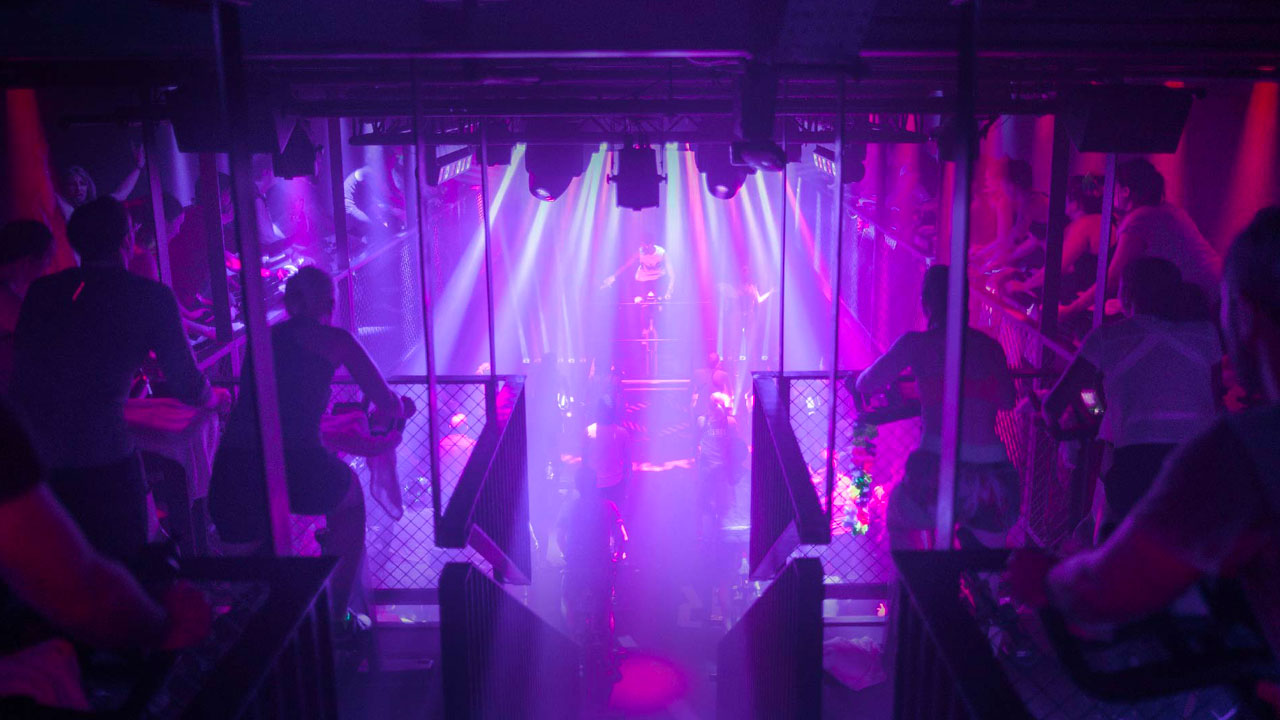
There are 7,200 fitness clubs and gyms in the UK. Around 10.3 million people in the UK are members of gyms. It’s estimated that 64 percent of British adults are now overweight, which includes 28 percent that are obese. We all know that we have a huge problem in this country.
After a global pandemic and all the lockdowns we’ve had, we have to admit that a lot of us re-evaluated our values and our daily routines. During lockdowns, some people started new healthy habits and started working out at home. Brands like Peloton, nation favourite PT Joe Wicks and home workout apps grew dramatically. When gyms re-opened a lot of people rushed back and some signed up for the first time.
The options are endless when we think about gyms. Especially in Central London, we have different options for different types of budgets and preferences.
The most popular gym chain in the UK is Pure Gym and The Gym as they are dominating the market. Pure Gym is generating 206,000 searches per month which is explainable as it’s the largest gym in the UK with 294 gyms with over 1 million members. But there is a niche market that has picked up substantially: boutique studios that offer classes with high-intensity training.
In London we have Barry’s, F45, 1Rebel, Third Space, Equinox, Six3Nine, Rowbots, SoulCycle, GymBox and some others. But again, if we look to differentiate a category with gyms that are (HIIT) classes oriented there are four dominating the arena – F45, 1Rebel, Barry’s and Gymbox.
They are all high-intensity workouts and are becoming very popular and trendy. As a customer I’ve tried the majority of the spaces I mentioned including Pure Gym. My fitness journey started with a local traditional gym a couple of years ago before transitioning to F45 Training. After my initial 3 months at my local F45 I moved to other brands as I didn’t like it there.
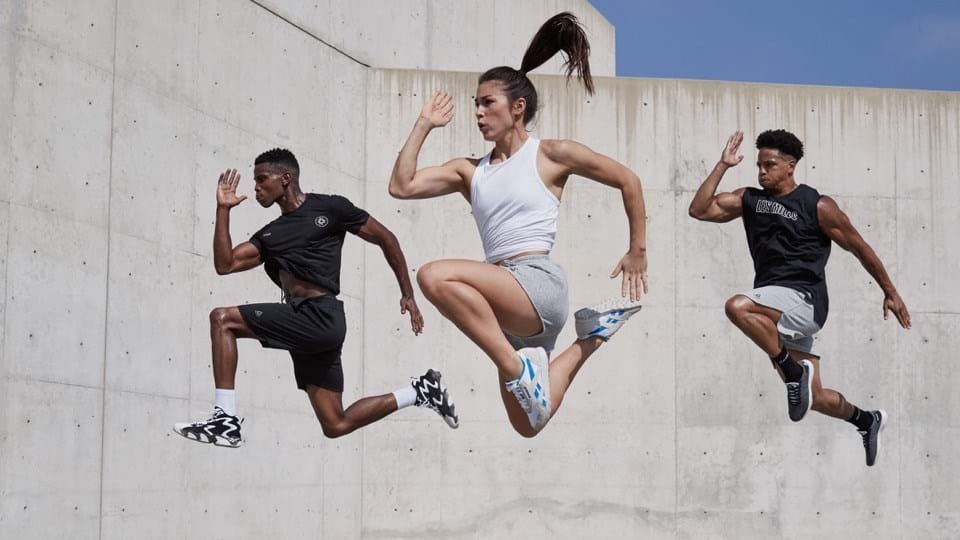
This is not about each brand’s workouts or classes as I’m not a qualified person to speak about fitness, this is about their customer journey and marketing.
In case you haven’t noticed there is a trend in London where millennial Londoners prefer to grab a Pret A Manger coffee and go for a high-intensity workout rather than hang out for a pint. There are one and a half million Londoners who are members of a fitness club.
Let’s start with the most well-known brand in the industry that is dominating the market, F45 Training. They are the fastest-growing franchise in the world. There are roughly 150 studios in the UK alone. They have excellent workouts, they are building their brand equity and a lot of their members are fans of the brand. They are currently collaborating with David Beckham which obviously increases their brand value, share price and brand awareness.
1Rebel is a different model from other gyms. They have a lot in common with Soul Cycle. They are trying to be labelled as “King of Gyms”. They stand out with their slick interior design, their chilled towels, SMEG fridge, Refuel Bar (delicious smoothies), their blow-dries and hairstyling, their website and their content give all their venues and their brand a sense of celebrity glamour.
What is branding at the end of the day? It’s all about changing people’s perceptions of your brand.
If you see their website, and look at their content, it feels like they are the ‘cool kids’ in town. You want to be part of that. People, especially millennials, want to be perceived as cool. We all want other people to perceive us a certain way.
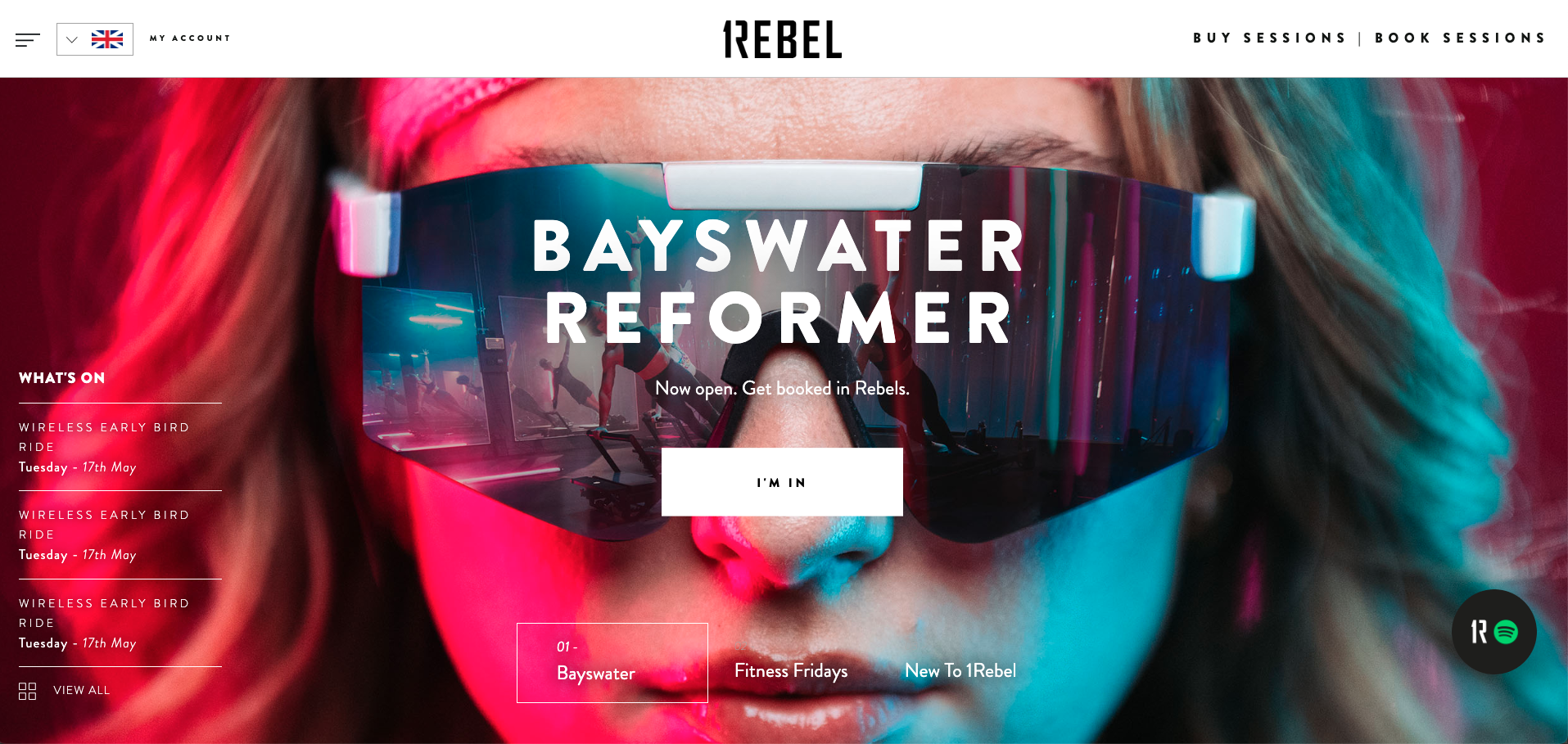
Their design and content is top-notch, you can see that they invest in a great and creative team to create all their marketing collateral. They work hard on their tone of voice, and once you are familiar with their brand you know when they communicate. It’s the simple things that you notice, for example on their website under 1R Trainers they wrote the following “The people you love to hate”. It’s humorous because it’s true.
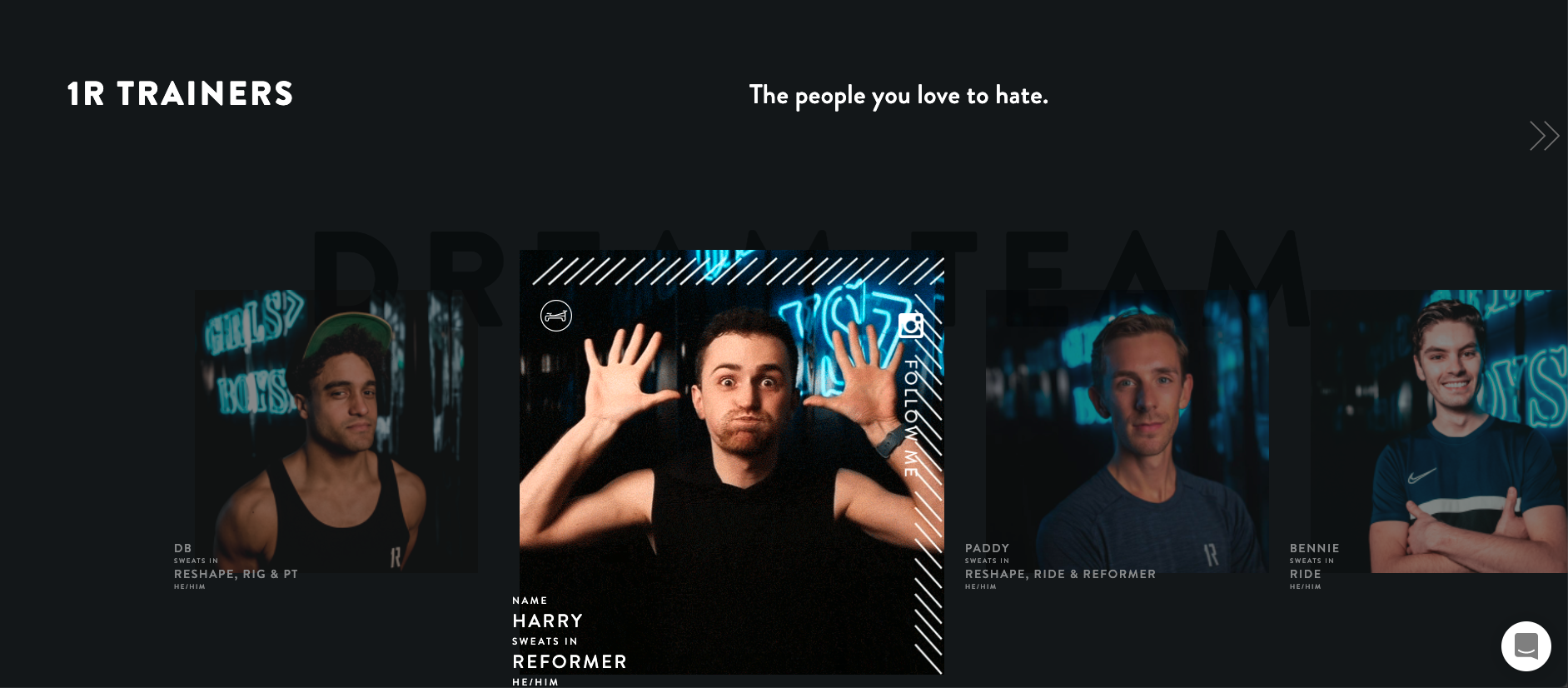
On my 1Rebel steel water bottle, it says #rebelagaintsplastic and on the other side it says ‘It’s just one straw. Said 7.5 billion people. Join us in the fight against single use plastic’. I want to join this fight and I guess a lot of their members do.
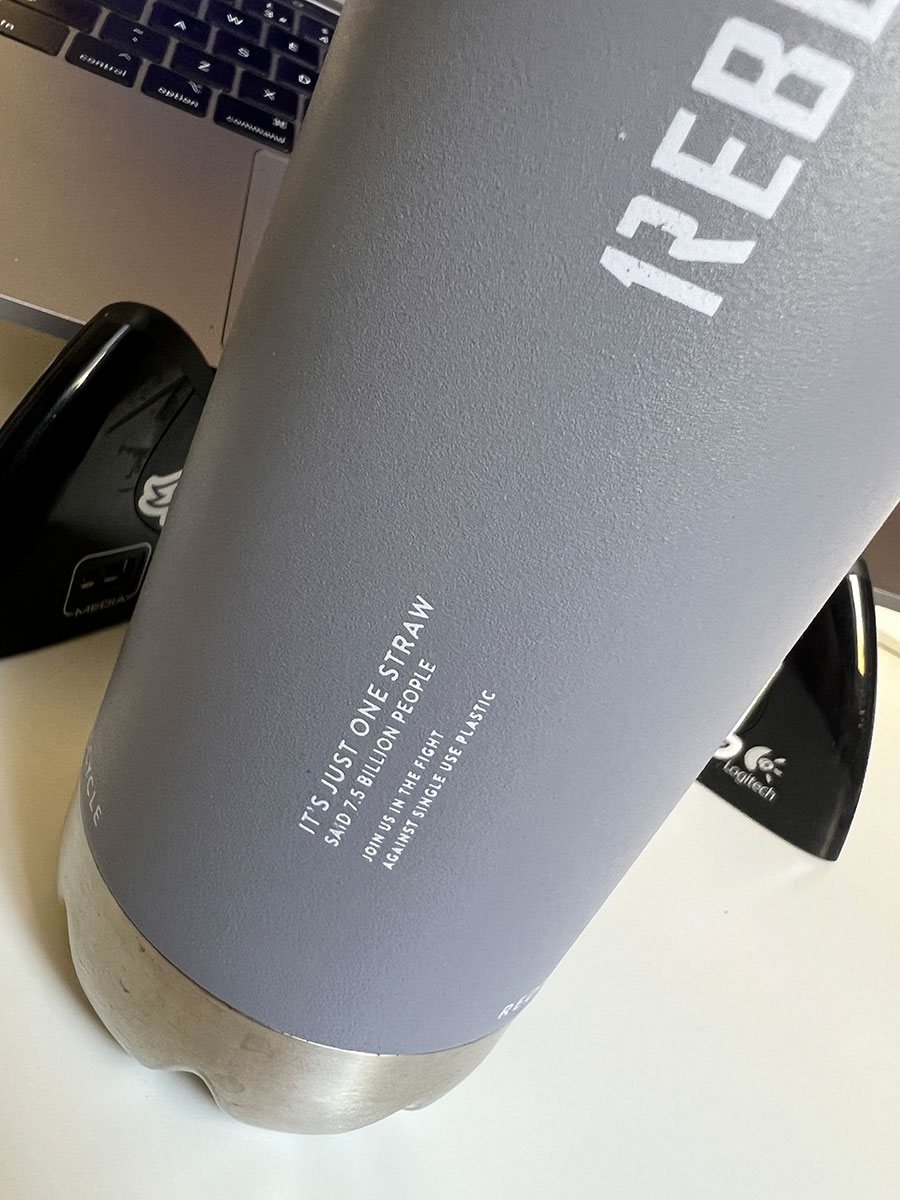
If we look at their offering on social media we can see that they have a good mix of content that adds value to their audience and a mix of content that is purely entertaining and a smaller percentage of content that sells.
Here’s an example, as you can see this is a fun post that is ‘selling’ and educating their audience about their rowers.
Another piece of content that educates people about diversity and inclusion:
https://www.instagram.com/p/Cb2MoeUj4u2/
An inspiring post for Mother’s Day:
Here’s a very creative way of informing people that they are opening Reformer at Angel:
Another studio would just post a static design saying we are opening a new studio and that’s it.
Here’s how you make a piece of content that is impactful for International Women’s Day:
This post is selling their new Ride Studio in Victoria, which actually inspired me to go and try it out and I’ve been going there occasionally:
Another great initiative they have is One Shake One Tree – for every shake you buy in the club they will plant one mangrove tree. This helps rebuild forests and reduce the impact of climate change all while also supporting local communities with work opportunities. I believe this is a great idea.
They’ve done an Earth Day post about it as well:
https://www.instagram.com/p/CcqAj8vIDW6/
So all this is great, slick designs, great videos, educating, entertaining and inspiring people. The only downside is they don’t have a brand story, we can guess based on their actions in what they believe but we don’t really definitively know. So that’s one of the pitfalls they have. If another gym creates a similar product with slick designs, great videos, members might leave because there is no emotional connection with the brand on a deeper level.
I talked about this in my book Not Another Pair of Shoes – if we want to create brand loyalty and create an emotional connection we need to have a brand story that includes emotions, struggles and of course a structure. Their tagline is not really creating an emotional connection and it’s not really telling people the change they are making (King of Gyms) it’s very ego-driven as they are trying to position themselves as the best gym in town. If we want people to know that we are the best we need to show it with our actions, not say it.
The tagline should represent and show the change we want to make, the change we are making, and the transformation we are making rather than something that is solely focused on ourselves.
You might be thinking how do you create this type of creative and valuable content? They are creating their content by planning first and then working on a creative brief. It’s not like they are thinking on the day what they are going to post and then some trainers post about their workouts.
I see so many gyms post every day the same thing over and over again. It’s interesting to watch for the first week but after that, it’s just repetitive and boring.
That’s why it’s imperative to think about who is this content for, then create a proper content strategy and then work on creative briefs. If we are struggling with what to post the best thing to do is to look for consumer insights. I wrote an article about why gyms have a marketing problem; you can read it here.
The goal is to focus on your brand story and once you have that, focus on the transformation that you’re making. Most gyms focus on selling memberships – rather than other elements; how to create good habits, how to change your mentality, how to motivate yourself and other topics that will help people start a new habit.
If we want to create an emotional connection, differentiate and build a loyal audience we need to invest time, energy and resources in creating great content.
If you want help with your brand purpose and content strategy, you can get in touch with me on [email protected]
Let me know what you think in the comments below. I’m off to my 1Rebel Reshape class after my morning F45 Soho session.


